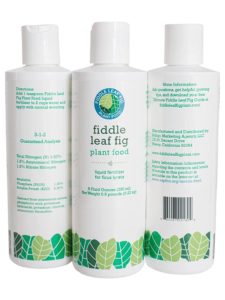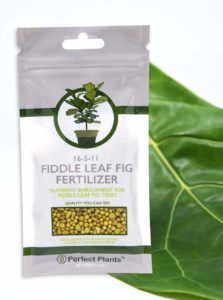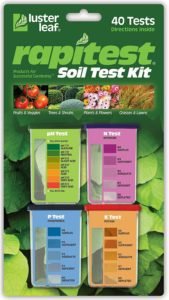The fiddle leaf fig (Ficus Lyrata) is a recently popularized plant from the Moraceae family, which includes fruiting fig trees, mulberry trees, and the ficus houseplants that preceded it in popularity, the Ficuss anii.
The saucer-like leaves are the draw of this plant, which has unique nutritional requirements to keep them in perky, statuesque condition.
What to look for in a fiddle leaf fig fertilizer
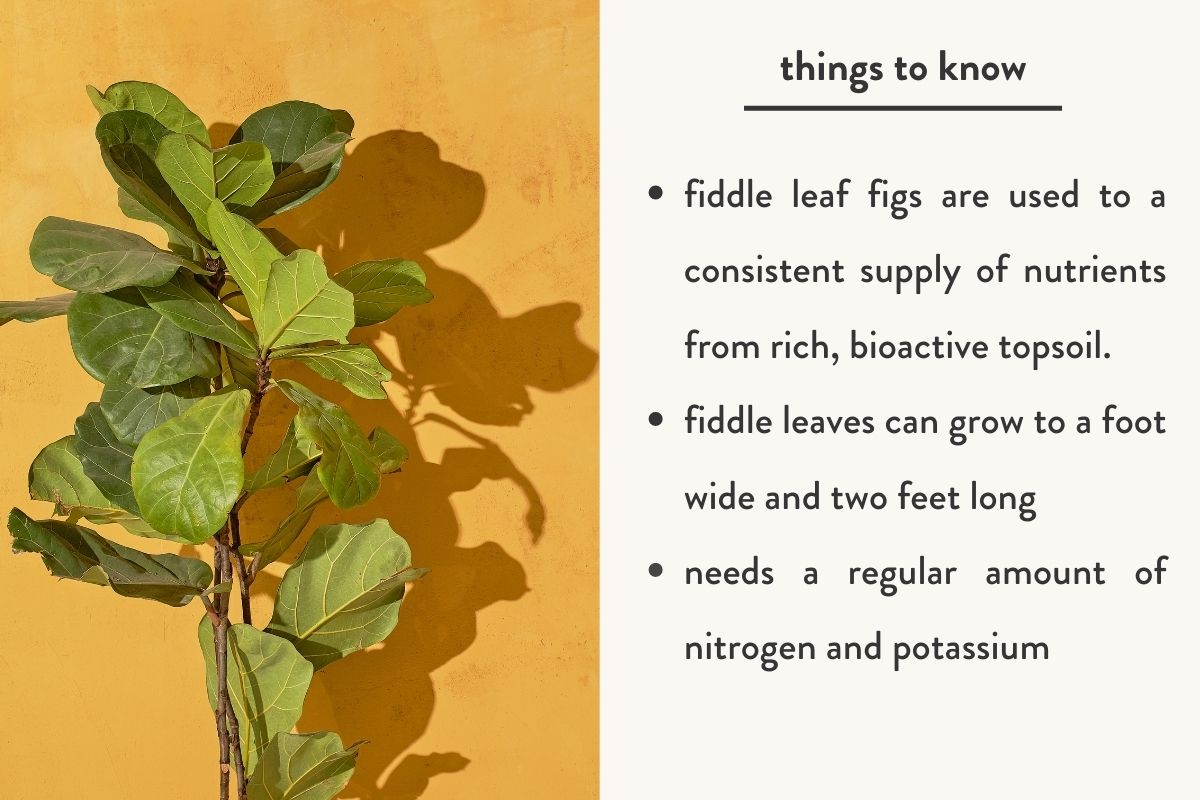
The fiddle leaf fig tree is native to West Africa, where it grows in dense jungle environments. Although it does have soil roots as a mature plant, a fiddle leaf starts out as an epiphyte, a plant that grows on tree branches or mossy stones and has aerial roots that absorb nutrients from rainwater and sources on its host.
As a fiddle leaf grows, it sends out base roots that reach downwards to the ground, where it establishes shallow roots and grows a woody stem.
As a native of the rainforest, fiddle leaf figs are used to a consistent supply of nutrients from rich, bioactive topsoil. This has allowed the plant to grow the large, fiddle (or lyre) shaped leaves that make it so attractive.
The fiddle leaves can grow to a foot wide and two feet long on large mature specimens. Their preference for indirect light is evident in their deep green color, a sign of chlorophyll storage.
A fiddle leaf needs a regular amount of nitrogen and potassium to be sure its leaves are strong and healthy, with a smaller amount of phosphorus to keep its roots and stem firmly.
A good fiddle leaf fig fertilizer will mimic these natural conditions and provide a steady flow of nitrogen and potassium.
Fiddle leaf fig trees grow at an average rate, which can vary by lighting, watering, and fertilizing conditions, but they can get very tall, and large plants have large energy requirements.
A fiddle leaf fig will deplete its soil of nutrients to maintain its wide leaves and produce more leafy growth. A consistent supply of fertilizer during its growing season will keep your ficus lyrata big and green, the way it should be!
Types of fiddle leaf fig fertilizers
Your fiddle leaf fig tree is a little more challenging than other houseplants, with a particular preference for its fertilizer. With its big leaves and smaller roots, the best NPK ratio for a fiddle leaf is 3-1-2 (or 6-2-4). While it will be happy with a balanced fertilizer, it uses more nitrogen and less phosphorus.
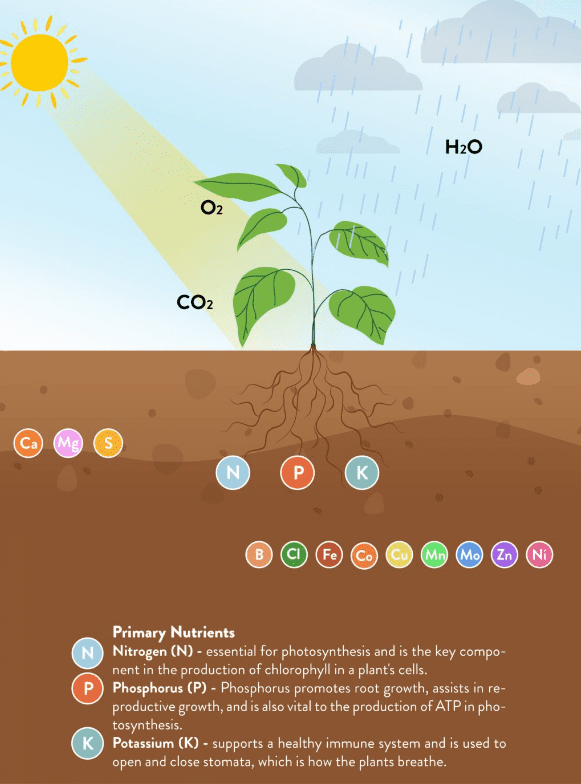
Too much unused phosphorus can build up in the soil and make iron and other micronutrients unavailable, and like most other indoor plants, fiddle leaf figs like the soil to remain slightly acidic, whereas too much phosphorus can make the soil too alkaline and nutritionally restrictive.
Liquid fertilizers
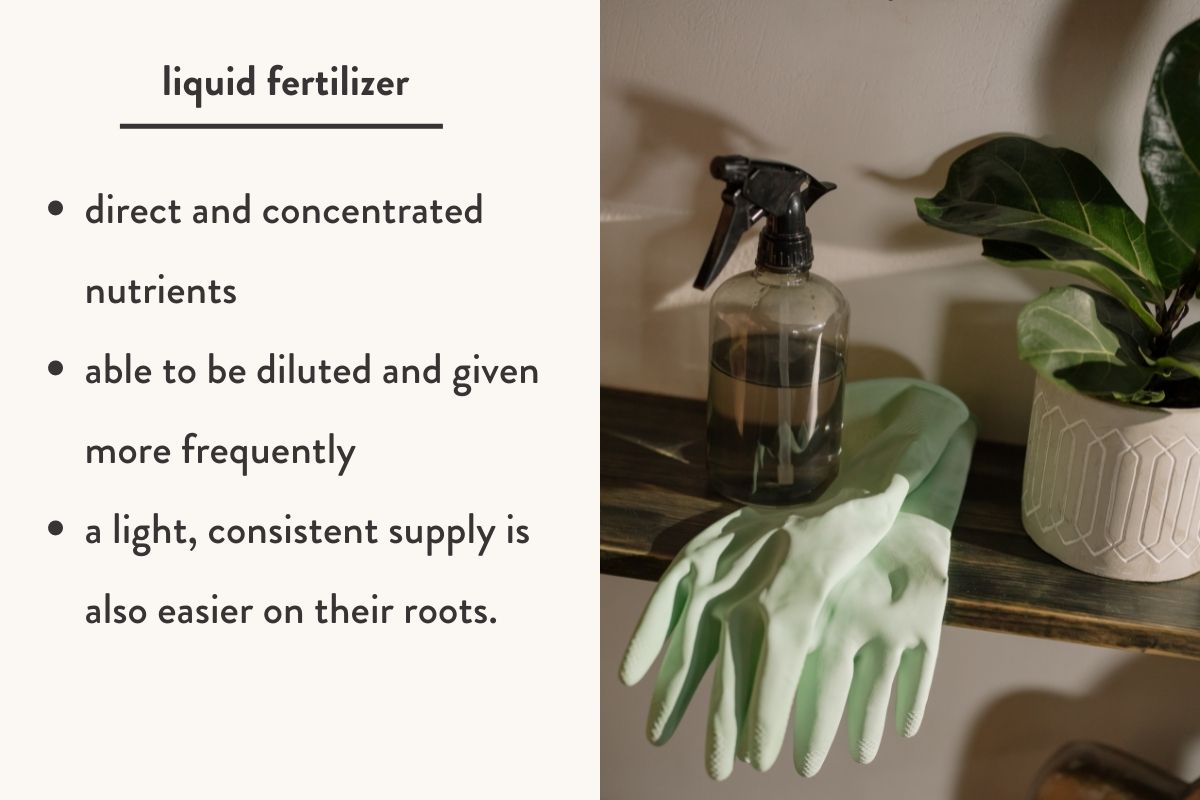
Liquid fertilizers are great options for fiddle leaf fig plants, who like the direct and concentrated nutrients, similar to what they would receive in their natural environment. These plants have roots that are comparatively small for their mature size, similar to a monstera a jade plant. Fiddle leaf figs store much of their moisture in their woody stems and leaves, rather than their roots.
Liquid fertilizers are able to be diluted and given more frequently to a fiddle leaf, which mimics its familiarity with a regular supply of nutrients. In addition, a light, consistent supply is also easier on their roots.
Slow-release fertilizers
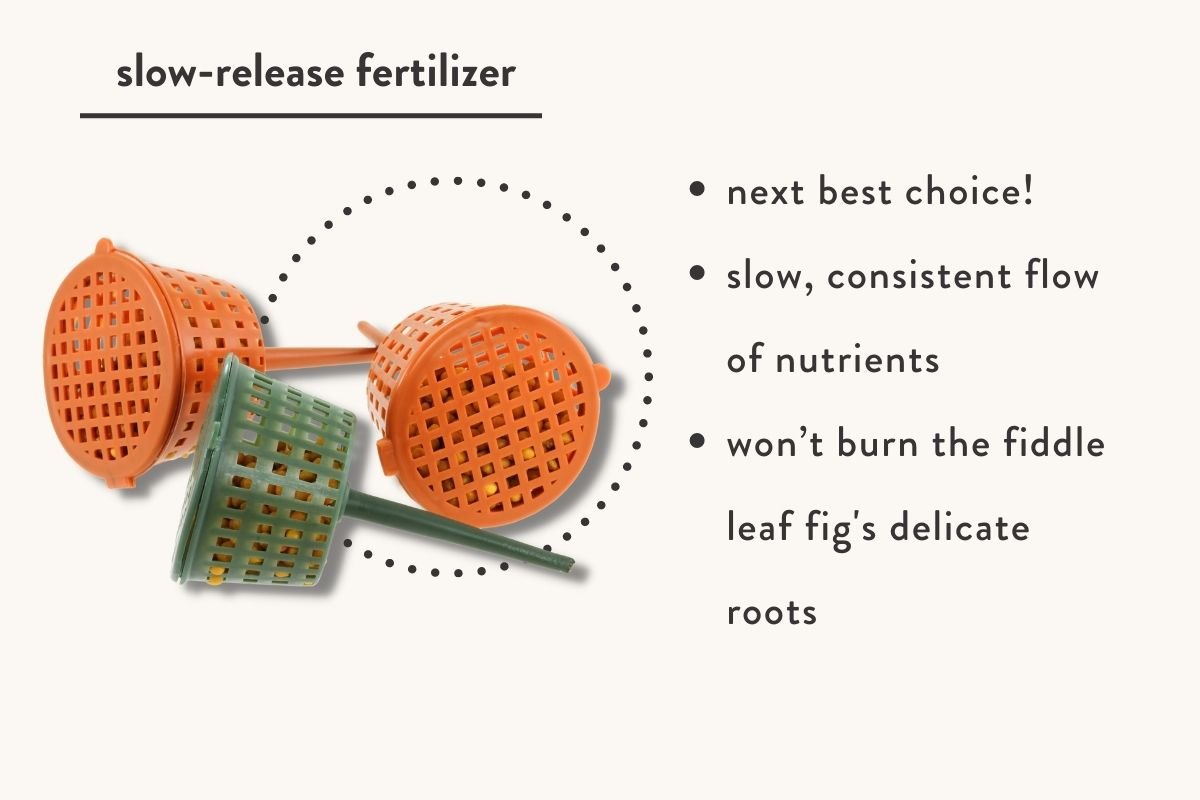
If you don’t use a liquid fertilizer, a slow-release organic is the next best choice for a fiddle leaf tree. This will deliver a slow, consistent flow of nutrients that won’t burn the somewhat delicate roots, which like to be root bound in their pots (more roots means less soil to hold and buffer against solid fertilizers). Fertilizer that gets released too quickly can burn and damage the root system of the plant.
Granular fertilizers
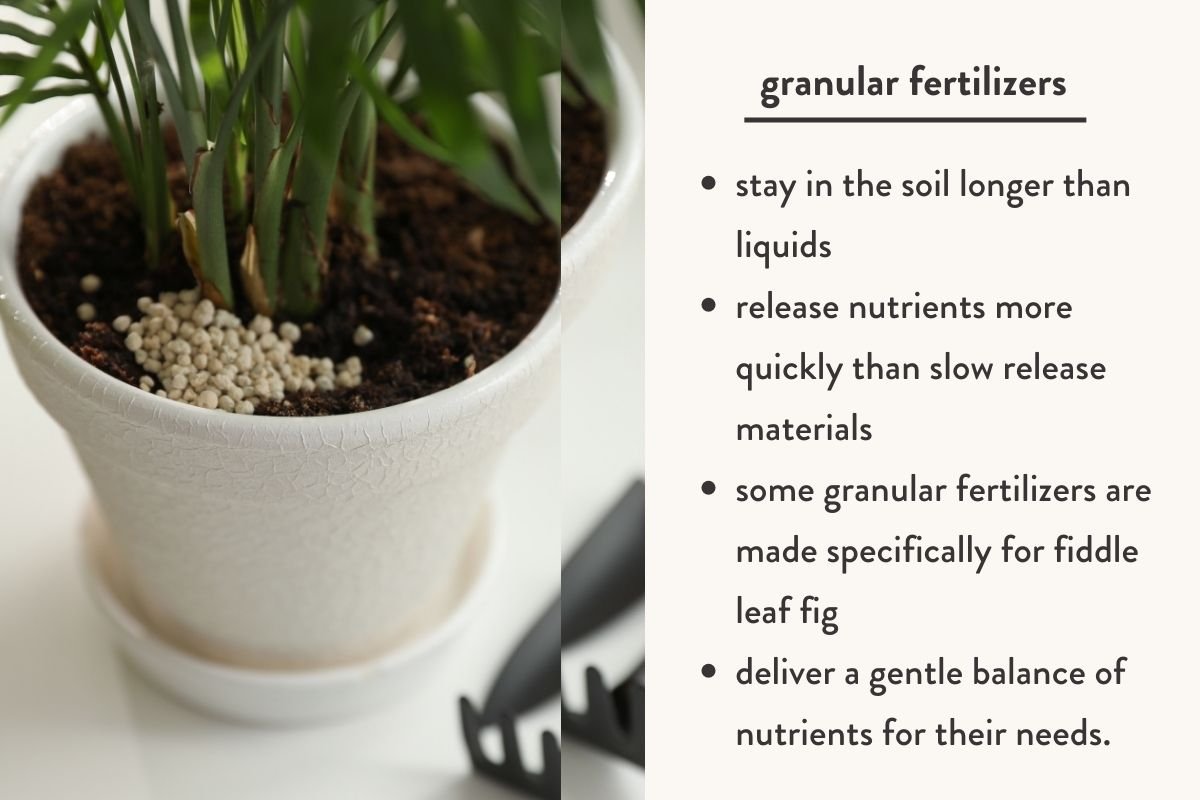
Granular fertilizers stay in the soil longer than liquids, but they release nutrients more quickly than slow release formulas and materials. However, there are granular products formulated specifically for fiddle leaf figs that deliver a gentle, specially formulated balance of nutrients for their specific needs.
How often to fertilize a fiddle leaf fig tree
The frequency your fiddle leaf fig needs fertilizer depends on a few factors, including how often you are able to apply it, and the growing environment the plant is in. If it’s easier for you to apply an organic slow-release fertilizer once a year, it might be preferable to applying liquid fertilizer more frequently.
Liquid fertilizers can be given to a fiddle leaf every 2 to 4 weeks with water, but some fiddle leaf fig parents will give a very diluted dosage of liquid fertilizer once every week or two with their normal watering schedule.
In general, plants should only be fertilized during their growing seasons, which tend to be in spring and summer. Depending on your location, this will be true for your fiddle leaf as well.
Spring
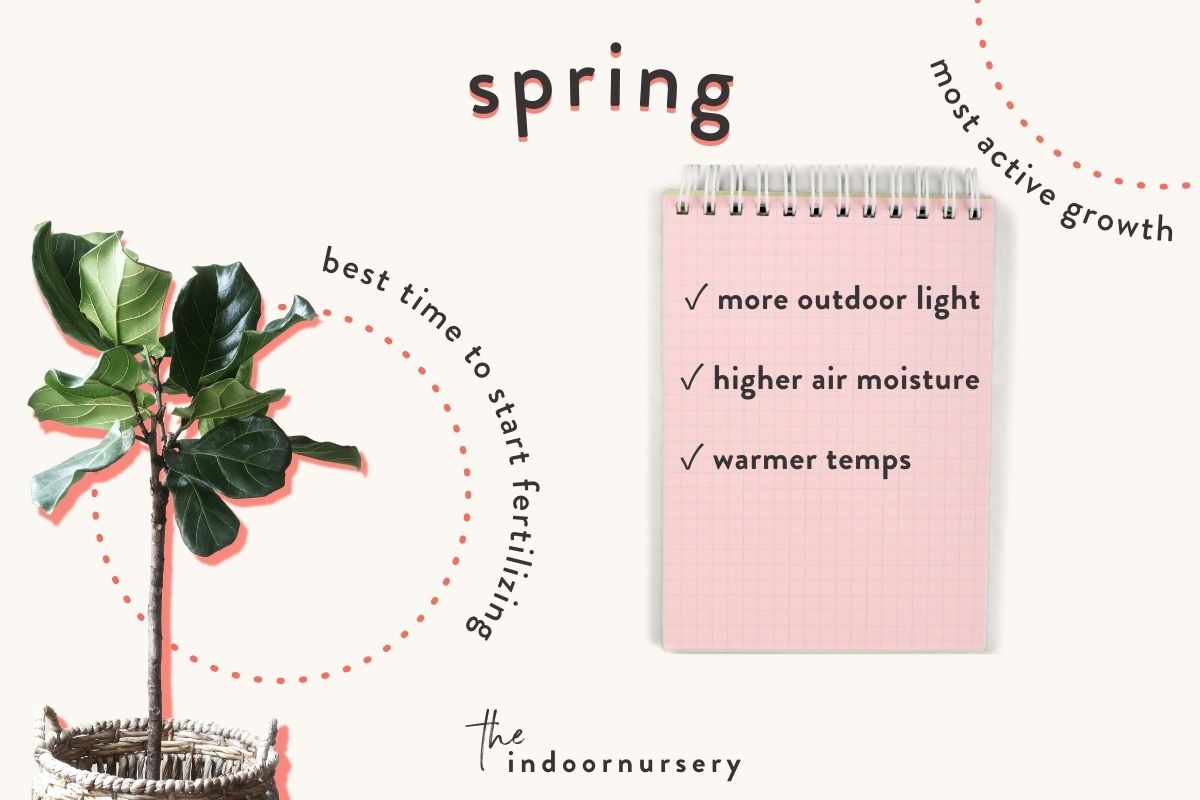
The beginning of spring is the best time to start fertilizing your plant after several months of letting it rest. Springtime is the period of most active growth for many plants, especially for tropical houseplants that aren’t in tropical conditions. More outdoor light, higher air moisture levels, and warmer temperatures provide the conditions that fiddle leaf fig trees love.
Summer
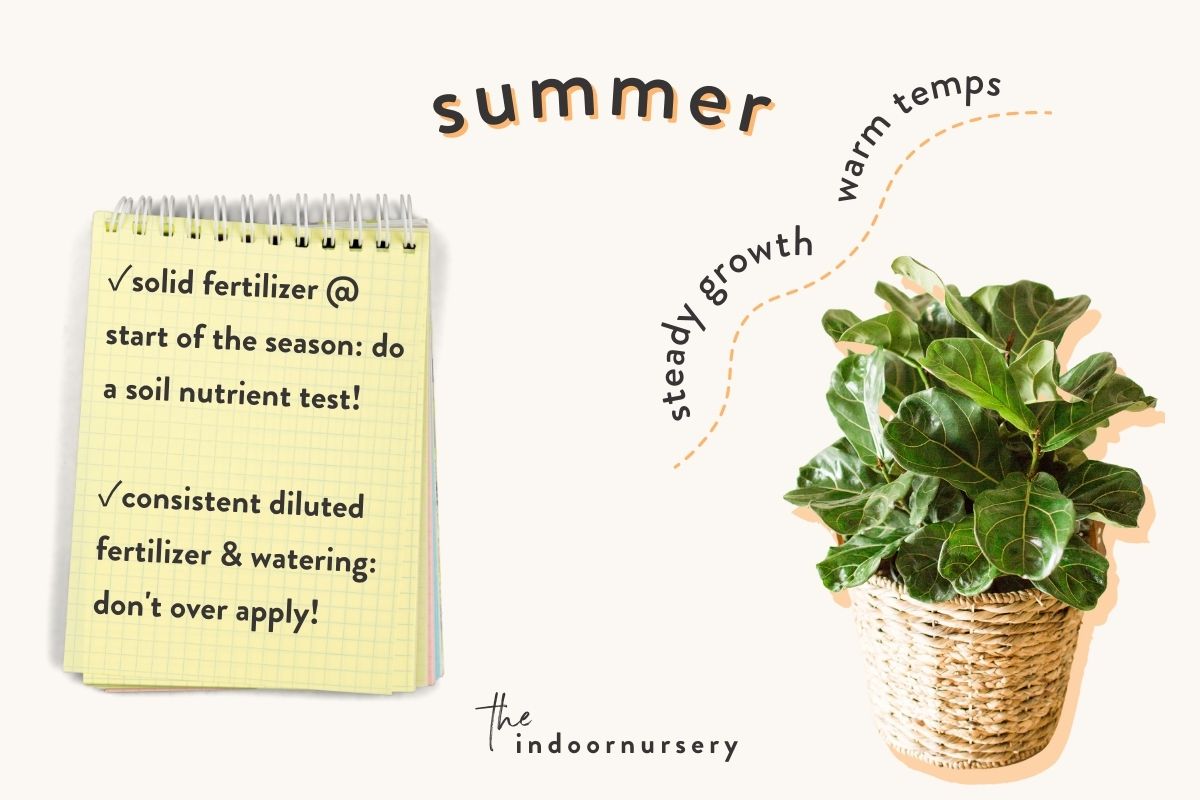
Plants grow steadily through the summer and they take advantage of longer daylight hours and warm temperatures. If you gave your fiddle leaf tree an application of solid fertilizer at the beginning of the season, you can perform a soil nutrient test to check the levels of the NPK macronutrients, and add a second application as necessary.
If you have been giving your fiddle leaf consistent diluted servings of fertilizer with regular waterings, be sure you’re not over applying. Even though a fiddle leaf likes a little more fertilizer than average, it also can easily be damaged by overdoing it.
Fall and winter
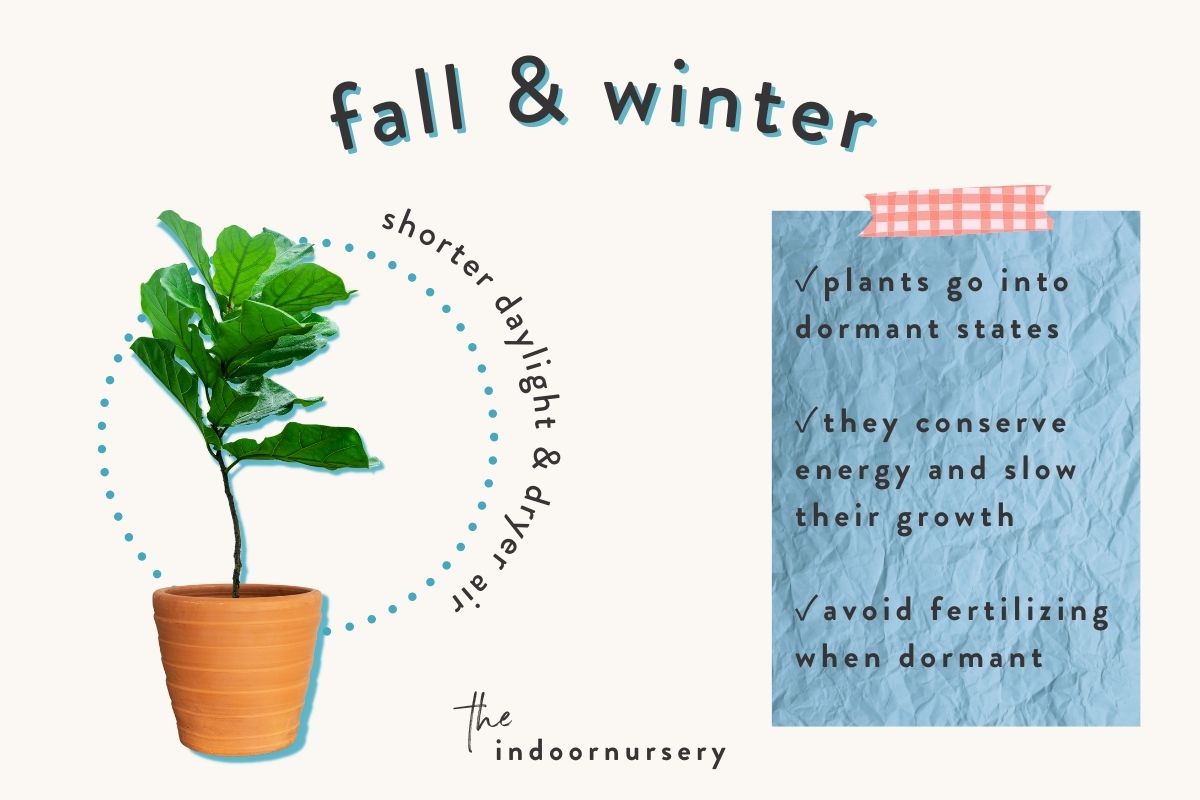
In climates where winter temperatures fall below freezing, daylight hours are shorter, the air is dryer, and plants go into dormant states where they conserve energy and slow their growth. Plants shouldn’t be fertilized while they’re dormant since their energy-conserving states won’t absorb the extra nutrients being added. Too much excess fertilizer, especially synthetic forms that are made of salt-based concentrations, can stress and damage the fiddle leaf’s delicate roots.
In tropical locations, fiddle leaf figs may grow steadily throughout the year for a lack of cold seasons, in which case, a steady delivery of diluted liquid, or twice-annual organic fertilizer applications, would be the best strategy.
Stress indicators on a fiddle leaf fig plant
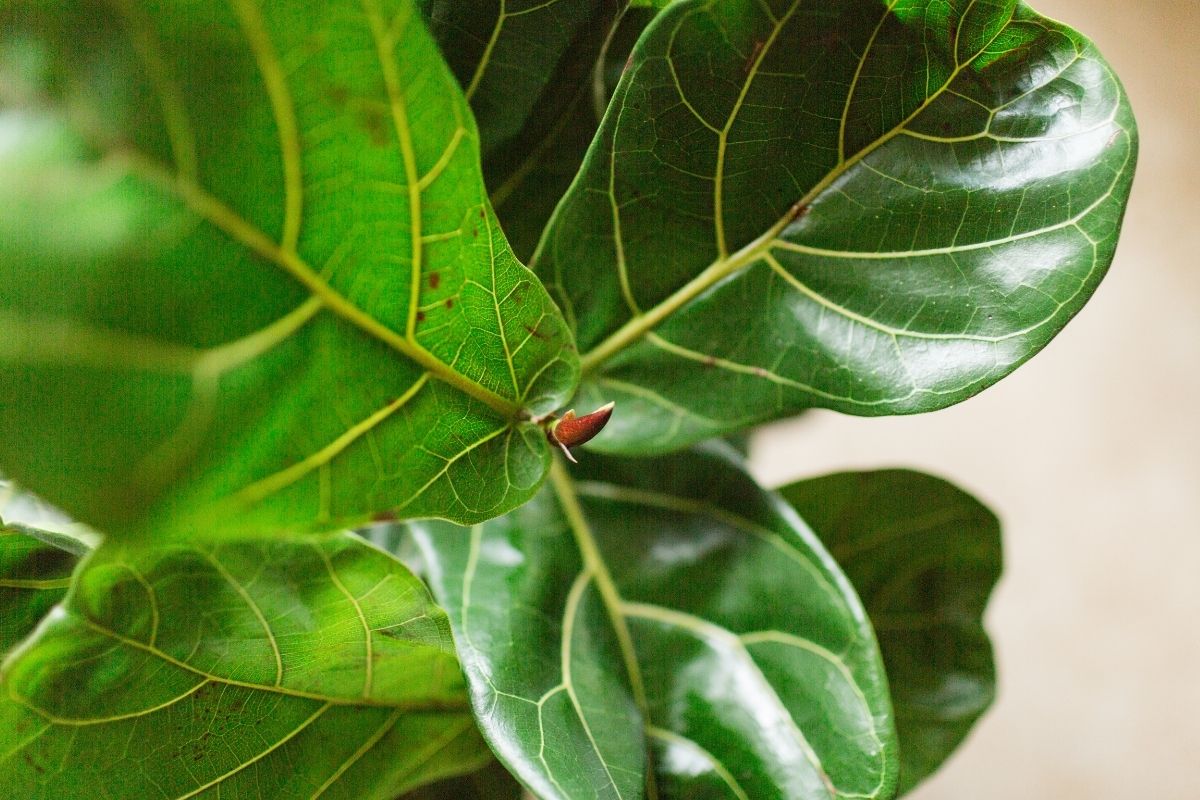
A happy fiddle leaf will have firm, waxy leaves that are an even dark green color. If a fiddle leaf is stressed, it will show it in its leaves.
If they are limp or falling off (normally from the bottom up), browning at the tips, or starting to yellow, it may be a sign that you’ve either over-watered your fiddle leaf fig, over-fertilized it – or both.
A lack of new growth, as well as yellowing and brown spots, are signs your fiddle leaf plant isn’t getting enough nutrients.
Too much of certain nutrients can become toxic, and too much of another can block nutrient availability. For example, too much phosphorus can lead to minerals like iron and copper becoming locked up in the soil and unable to be absorbed by the plant; this results in mineral deficiencies and resulting conditions like chlorosis, or lack of iron and, by consequence, chlorophyll.
A soil pH test should be done when you test for soil nutrients to be sure you’re conditioning the soil properly.
Be sure to evaluate your growing conditions (like light and watering amounts) to be sure whether your plant is showing signs of fertilizer deficiency and not over- or under-watering, which can present similar symptoms.
FAQ
What should I do if I’ve over-fertilized my fiddle leaf fig?
Depending on the kind of fertilizer you applied, there are different ways you can handle an over-application. In any case, don’t add more fertilizer! If you’ve added a little too much liquid fertilizer, it should be rinsed out over successive waterings. If you’ve added too much liquid or solid fertilizer, the plant’s roots may need to be rinsed and repotted in fresh soil. Be careful, however, since many potting soils come with fertilizer. If you use an all-purpose potting soil, check the ingredients for fertilizer additives. A gentle, organic material-based soil should be a good environment for your fiddle leaf to recover in. A root repair product can help your fiddle leaf’s roots restore to a strong, healthy tree.
More about fertilizing
- 10 Best Worm Composter Bins For Easy Homemade Compost
- Compost Starter 101: When You Need It And How To Make It
- Our top pothos fertilizer picks for luscious vines
- 5 reasons to use coffee as fertilizer for your plants
- Best fertilizer for Monstera plants for gorgeous leaves
- Fertilizer Burn on Plants? Here’s How to Fix it
- Fiddle leaf fig fertilizer: How to feed your fiddle leaf


